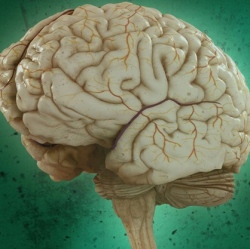
A dollop of peanut butter and a ruler might be a way to confirm a diagnosis of early-stage Alzheimer’s disease.
Jennifer Stamps, a graduate student in the McKnight Brain Institute Center for Smell and Taste and the University of Florida, came up with the idea of using peanut butter to test for smell sensitivity when she was working with Kenneth Heilman, a professor of neurology at the University of Florida.
The ability to smell is associated with the first cranial nerve and is often one of the first things affected in cognitive decline. Because peanut butter is a “pure odorant,” it is only detected by the olfactory nerve and is easy to access.
“Dr. Heilman said, ‘If you can come up with something quick and inexpensive, we can do it,’” Stamps says.
For a small pilot study published in the Journal of Neurological Sciences, patients who were coming to the clinic for testing also sat down with a clinician, 14 grams of peanut butter—which equals about one tablespoon—and a metric ruler.
The patient closed his or her eyes and mouth and blocked one nostril. The clinician opened the peanut butter container and held the ruler next to the open nostril while the patient breathed normally. The clinician then moved the peanut butter up the ruler one centimeter at a time during the patient’s exhale until the person could detect an odor.
